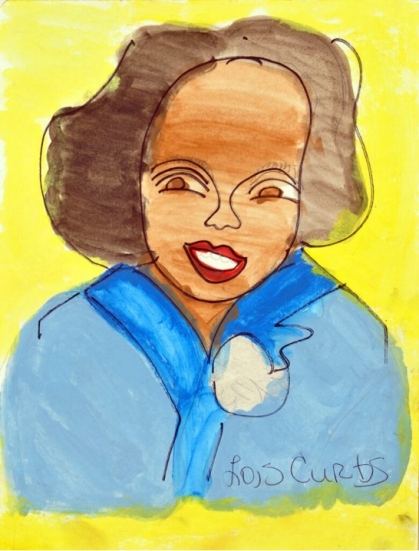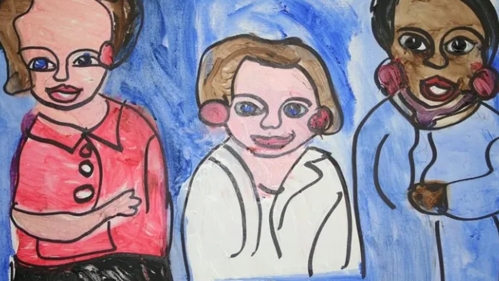Many people first heard of Lois Curtis in 1995 when Sue Jameson of the Atlanta (GA) Legal Aid Society filed a lawsuit against the then-Commissioner of the State’s Human Resources division, on behalf of Lois and another woman, Elaine Wilson. The two women were deemed well enough to leave the psychiatric hospital they lived in, but the state didn't have adequate resources in the community to support them. That lead to a suit under the ADA and and the case went all the way to the Supreme Court of the United States. Their eventual victory meant that the state of Georgia had to provide the supports necessary for Lois Curtis and Elaine Wilson to leave the institution and move into their communities.
It took a number of years before Ms. Curtis was able to find the right setting for herself. All-too-often, people don't begin to thrive until person-centered thinking and planning are embraced and utilized to find their best setting. Once Ms. Curtis found that place, her career as an artist blossomed. In 2004, the U.S. Department of Labor provided her with an employment grant that allowed her to organize several exhibits of her work. For Lois, the joy of self-expression was the most important in being an artist.

Lois created mostly portraits, including self-portraits. Early works were created using ball point pen, after which she moved to bold colors and pastels, with simple lines. Because Lois had no photos of herself as a child, her work captures strong emotions through color and emphasize strong personal relationships. Lois was most proud of the self-portrait she presented to then-President Barack Obama on June 20, 2011, in the Oval Office of The White House.

Today we remember Lois Curtis not only as a disability rights activist and icon, but also an American artist. During her life she also loved to sing, speak nationally on the topic of disability rights, travel and spend time with friends. Although Ms. Curtis died in late 2022 at the age of fifty-five, her artwork lives on. Her landmark legal victory not only liberated her from institutionalization but also paved the way for countless others with disabilities to live fulfilling lives within their communities. Her dedication to self-expression through art not only brought her personal joy but also left a legacy that continues to resonate, demonstrating the power of a person-centered life.
She left us with these words:
“I feel good about myself. Sometimes I put my mind on the earth and go to the future where my art pictures are on the wall. People would love to see my pretty art pictures because they will take them to heaven and hug them forever.”

